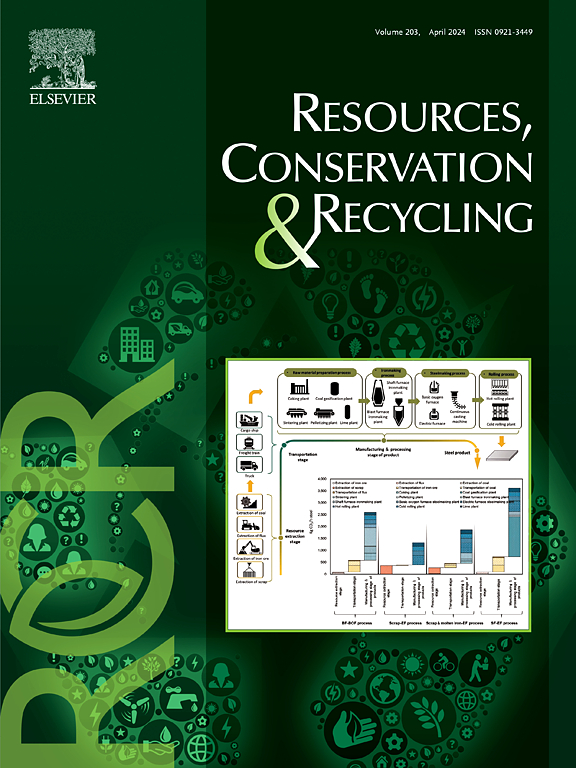Quantifying the supply system risk of the global copper industry chain under different shock scenarios
IF 11.2
1区 环境科学与生态学
Q1 ENGINEERING, ENVIRONMENTAL
引用次数: 0
Abstract
Based on the complex networks of global copper trade and production, this paper proposed a method for quantifying the national supply risk by measuring changes in the entire supply system, and analyzed the key supply system risk points under different shock simulations. We found that countries with high supply systemic risk were mainly distributed in the upstream and downstream of the industry chain, with countries such as Peru, Chile, and Mexico in the upstream and Canada in the downstream. High-risk countries in the upstream had the characteristics of supply systemic risk growth as the shock intensity increased, which was different from the characteristics of high-risk countries in the downstream. The countries with high trade loss risk were different from those with high production loss risk. To optimize the supply system risk of the global copper industry chain, we should pay attention to the key risk nodes of different links.

求助全文
约1分钟内获得全文
求助全文
来源期刊

Resources Conservation and Recycling
环境科学-工程:环境
CiteScore
22.90
自引率
6.10%
发文量
625
审稿时长
23 days
期刊介绍:
The journal Resources, Conservation & Recycling welcomes contributions from research, which consider sustainable management and conservation of resources. The journal prioritizes understanding the transformation processes crucial for transitioning toward more sustainable production and consumption systems. It highlights technological, economic, institutional, and policy aspects related to specific resource management practices such as conservation, recycling, and resource substitution, as well as broader strategies like improving resource productivity and restructuring production and consumption patterns.
Contributions may address regional, national, or international scales and can range from individual resources or technologies to entire sectors or systems. Authors are encouraged to explore scientific and methodological issues alongside practical, environmental, and economic implications. However, manuscripts focusing solely on laboratory experiments without discussing their broader implications will not be considered for publication in the journal.
 求助内容:
求助内容: 应助结果提醒方式:
应助结果提醒方式:


